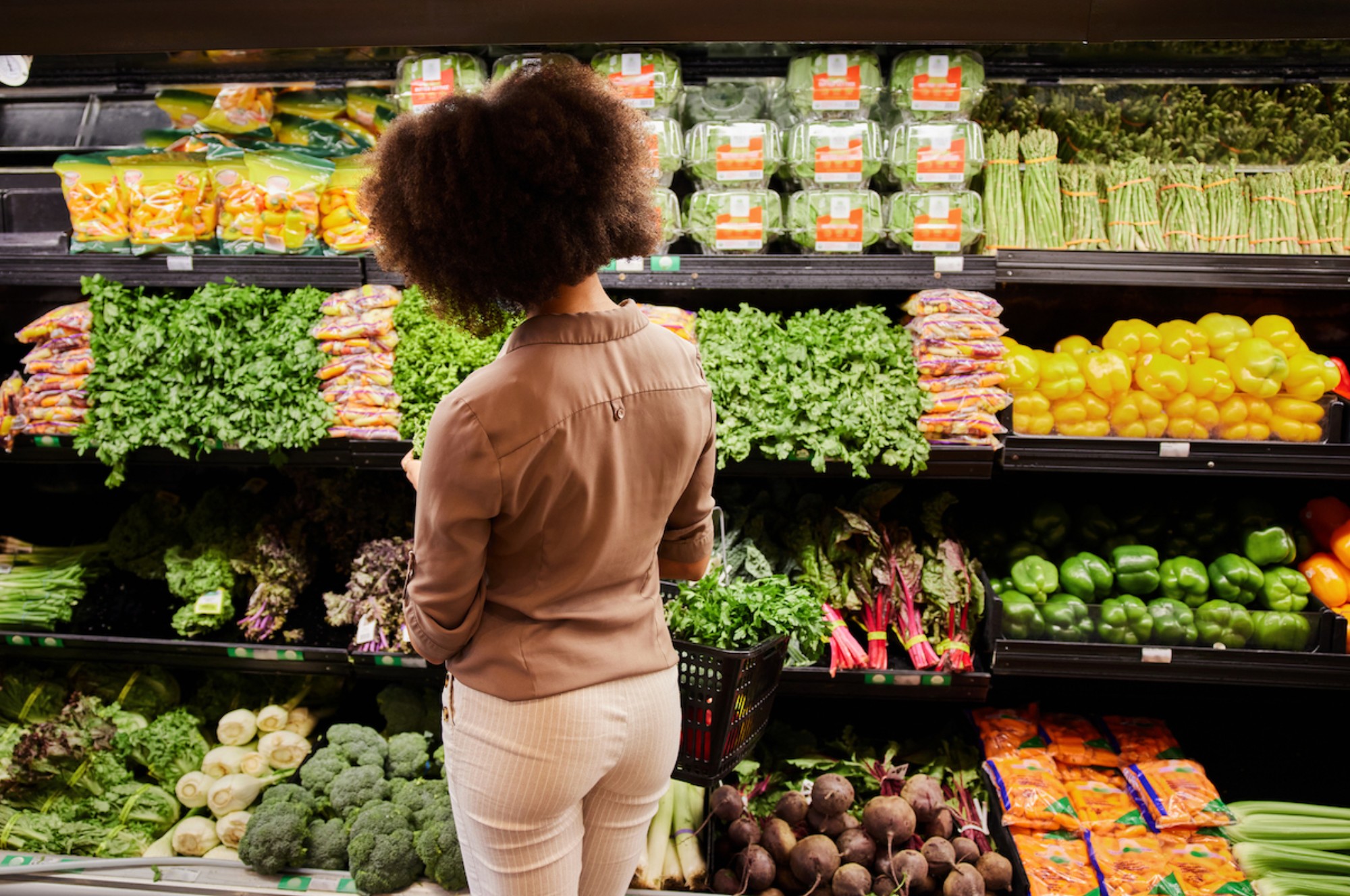For Jennifer Cadenhead (Ph.D. ’21, M.S. ’18), a simple Nutrition 101 course was enough to inspire the trajectory of her career path. Previously working in the corporate sector, she found that her own health struggles ignited a deeper interest in nutrition and health.
“I took a Nutrition 101 course and realized that so many of the chronic health issues that Black individuals suffer from are ultimately related to food,” she explains as to why she became a registered dietitian and went back to school to pursue a doctorate at TC and become a nutrition researcher.
Now the Executive Director of the Laurie M. Tisch Center for Food, Education & Policy, Cadenhead is identifying the ways in which current food policies and practices are contributing to food insecurity for underserved communities, but especially women and people of color.
Here’s what you need to know:
1. Women and Children Are Most Vulnerable
Statistics show that women are more affected by food insecurity than men, with Black and Latinx women with children disproportionately impacted. And yet even post-pandemic, women are 35% more likely to experience poverty than men.
“It’s expensive and hard to raise children,” says Cadenhead, noting that restaurants and bodegas in under-resourced neighborhoods may not even have fresh produce in stock, leaving families with limited options and indicating that we still have a long road ahead in the quest to make healthy foods more accessible.
“I spoke to a mom who had ten children—ten mouths to feed!” exclaims Cadenhead. “During the pandemic she was able to pick up meals for her children every morning from the local school that included fruits, veggies, and whole grains. That was a game-changer.”
Yet for Black and Latinx mothers, economic struggles make food insecurity even more of a challenge. “The pay disparities between men and women and then between women of color and white women are still very real,” shares Cadenhead, noting that systemic policies related to the racial gap in wealth accumulation can often accentuate tough times for Black and Latinx families without a financial cushion.
“When you have economic stress, you become more vulnerable and paying the rent may come before eating.”
2. Equitable and Accessible Resources Are Lacking
Cadenhead discusses the concept of these inequities are further accentuated through food mirages, areas where individuals live in close proximity to grocery stores with healthy food choices, yet most cannot afford or relate to any of the foods being offered — a concept that Cadenhead discusses in her “Community Nutrition” course.
“Grocery stores know they can put stores in underserved communities, yet they recognize that those communities are willing to travel to other neighborhoods for food, but not the reverse,” says Cadenhead. “They want to invest in areas with an affluent customer base. So you see very few grocery stores or places to buy healthy options in underserved communities.”
For Cadenhead, accessibility and convenience go hand-in-hand. “Many community members work multiple jobs and don’t have the time or simply don’t know how to cook. They default to whatever is convenient and affordable for them,” like soft drinks with excessive surgar levels, she notes. “At the end of the day, convenient options are not always healthy options given their community landscape.”
So what's the solution? “If we design a food policy that provides incentives for supermarkets, perhaps, to serve a certain population healthier options, that may go a long way. It’s not just about profit. It's about equity.”
3. Change Begins with Healthy Nutrition in Schools
“Nutrition starts in schools,” explains Cadenhead. In fact, children get almost half of their calories from school meals that often include healthy, plant-based options thanks to NYC’s new and improved food policy. “School meals play a huge role in increasing food security for families because they (schools) must adhere to regulated nutrition standards and meals are served at no cost to families in NYC,” explains Cadenhead.
Despite these positive changes, equity is still at stake. “I was in a national stakeholder meeting where we discussed the proposed changes to USDA standards for school meals in public schools, and we were discussing proposed milk changes,” Cadenhead shares. “We have found that more than 80% of children of color are lactose intolerant. Yet, suggestions to offer lactose free or other non-dairy options were immediately shut down by voices in industry—voices of power. These voices often speak the loudest in the debates.”
What’s Next?
While there is a call for change across the board, Cadenhead shares that volunteering at your local food pantry or simply asking what one’s basic needs are can go a long way. “If you want to be involved in supporting others, it’s important to view it as a partnership. Incorporate the voices of those with whom you are working. They know what they need. Ask questions. Listen and acknowledge what they are saying.”
She notes that oftentimes individuals want healthy food options at their local pantry, but do not ask or don’t know how to ask. “We’re all human and we all have to support one another,” she says.
“When you have better diet quality, you tend to have a better quality of life. A lower risk of future disease. A brighter future,” concludes Cadenhead.
